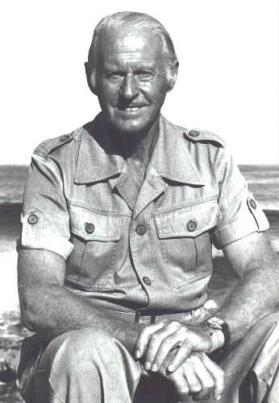Thor Heyerdahl was a man who lived for excitement. At the age of 22, he sailed to the volcanic Marquesas islands. Less than a decade later, he was fighting Nazis with the Free Norwegian Forces. But it was his long-held belief in an ancient link between South America and Polynesia that got him fired up the most.
Heyerdahl theorised that, even with a bloody great ocean in between the two destinations, the South Americans had simply sailed across on small wooden crafts, relying safely on the primitive technology of the time. If they could have done, why couldn’t he?

In 1947, he gathered a small team of like-minded explorers and began building a raft that would transport them almost 5,000 miles across the Pacific Ocean, using materials only available before Columbus had visited the Americas. The finished raft was named Kon-Tiki, after the old name for the Incan sun god Viracocha.
Heyerdahl had nearly drowned twice when he was a child, making this expedition even more astonishing. He later admitted that he feared he’d die out in the middle of the ocean more than once.
But 101 days after setting off from Peru, Kon-Tiki finally reached Polynesia and promptly smashed into a reef. Heyerdahl had proved beyond a doubt that the people of ancient South America could have sailed the Pacific and reached Polynesia. And surprisingly easily too – Kon-Tiki had proved to be a remarkably simple raft to manoeuvre, and so many fish had been caught from between the balsa logs that ancient sailors could have relied on them for hydration.
Although Heyerdahl’s overall theory is strongly debated by many today, the book he wrote about his journey became a best-seller. The following documentary, which he directed, later won an Oscar.
We have his book on our bookshelves – maybe it’s time I picked it up and read it.
LikeLike
I definitely would. On top of all his achievements, I’ve heard he was quite the author.
LikeLike